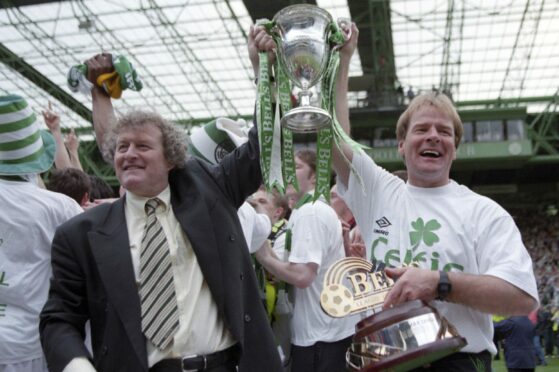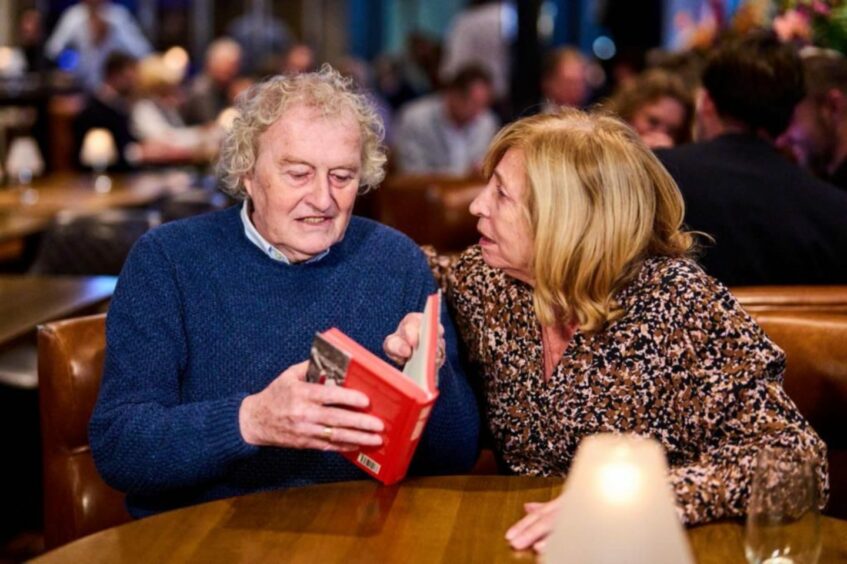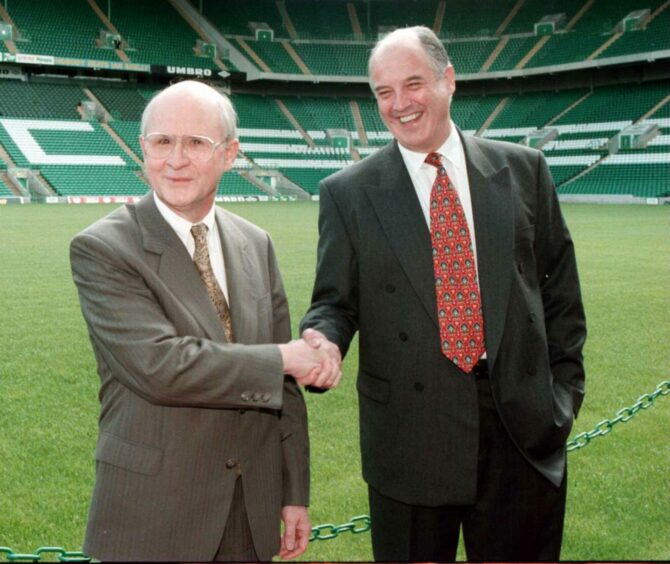
Wim Jansen has finally broken a 23-year vow of silence.
The Dutchman has revealed why he quit Celtic less than 48 hours after leading Celtic to the title which ended Walter Smith and Rangers’ hopes of a historic 10-in-a-Row.
Jansen was Celtic boss for only one season in 1997/98. His appointment was initially greeted with derision after he was brought in after a spell in Japanese football – just like current boss Ange Postecoglou – to succeed the axed Tommy Burns.
But he formed a formidable partnership with his No. 2, Murdo MacLeod, and won Celtic their first league flag since their Centenary season in 1988.
More significantly, he was the man who stopped Rangers from becoming the first club to reach double figures after they had matched Celtic’s achievements under Jock Stein.
However, while the party celebrations were in full swing, Jansen stunned the Scottish football world by walking out on Celtic after he invoked a get-out clause in his contract.
The reasons why he walked out on a chance to lead Celtic into the following season’s Champions League have never been fully disclosed.
But in Jansen’s new book, Meesterbrein (Mastermind), he has finally revealed that a complete breakdown in his relationship with Celtic owner, Fergus McCann, and general manager, Jock Brown, left him with little option but to resign.
And he recalled that he never spoke with them at all for half of his time at Celtic Park.
Jansen said: “The truth is, I hadn’t spoken to the board from January that season.
“Everything went through Murdo MacLeod. Of course, you cannot sustain such a situation. If you enjoy your job and what you do, it’s very easy.
“But if you don’t, it takes up a lot more energy. I wanted to continue to build a team at Celtic, but they didn’t want to spend any money.
“If you want to keep improving and go higher up, you have to spend money. It got to a certain point that I didn’t want to wait for the next argument anymore. I couldn’t go any further.
“For me, a big decision like that doesn’t depend on success or sympathy – it depends on vision. Do you move forward, or do you want to stay still?
“My gut instinct told me to leave. And everything I do, I do by instinct.”
Jansen, who turned 75 last Thursday, and has announced he is suffering from dementia, has many fond memories of his time in Glasgow where he also led Celtic to a League Cup victory against Dundee United in his only season in charge.
But he was stunned to discover Celtic had got rid of the men McCann had dubbed “The Three Amigos” – Pierre van Hooijdonk, Jorge Cadette and Paulo di Canio – before he arrived in Glasgow.
He said: “When I agreed to manage Celtic, they didn’t tell me anything.
“Whatever team in the world you manage, if you sell your three top attackers, there is little left.
“Working with Murdo was blissful for me because I was able to let him do a lot.
“In the team meetings, I focused on the game and he did the analysis of the opponents.
“Back then, you didn’t have the same information at your disposal as you have now, and I didn’t have the time to go to games.
“But because of the knowledge and work of Murdo, I knew exactly what to expect every week.
“John Clark was our kitman. He kept track of what was being written, and who we could and could not trust.”
But Jansen got off to a dreadful start, and the critics were baying for him initially.
New signing Henrik Larsson gave the ball away in a defeat at Hibs in the first game of the season before they crashed to a 2-1 home defeat to Dunfermline in their second league game.
And Jansen’s son, Wim Junior, revealed his father was reassured after a potentially-hostile incident after the game.
He said: “A supporter broke through the gates to speak to my dad. The stewards panicked.
“But I will never forget that the man just walked up to my father and said: ‘Mr Jansen, don’t be a ‘Yes’ man’.
“That was his message. Set your own course.”
And the former Feyenoord legend – who played in the side that beat Celtic in the 1970 European Cup Final, and in two World Cup Finals – began to get it right as his new signings gelled.
He stated: “You need time for these kinds of jobs, that’s all. We turned it around by making things change, and that will not happen overnight.
“For example, we got Alan Stubbs to play as a libero, and not as one of four defenders in a line.
“Tommy Boyd was the quickest of the two centre-backs, so we used him as cover.
“ I had a very nice right-back in Jackie McNamara. I pushed him up to the right wing because I saw that he was not only fast, but could also beat a man and could make a good cross.
“And Henrik Larsson needed crosses.
“We played Rangers in the second Old Firm game, and equalised in injury time. In retrospect, those were crucial moments. If we had lost, then the gap would have been too big.
“What happened when we won the league was immensely enjoyable. It was special.
“It is always the people who create the atmosphere. That love is incredibly deep.
“You can compare it with Feyenoord. There, the fans are also a twelfth man. It’s great for a manager to have something like that behind you.
“That’s why I chose to come to a club like Celtic.
“My wife, Cobie, still has letters from all sorts of people after we won the league.”
And Jansen’s son revealed his father is still revered wherever he goes by Celtic fans.
He explained: “Once we were waiting at Glasgow Airport. A stranger stood in front of my father, stammered a bit about Jansen the legend, sprinted to the nearest bookshop, bought the first book about Celtic he saw and ran back to get his autograph.
“He was as happy as a kid!
“I get asked about him all over the world. Ask Celtic supporters about him and you always get two responses like they are bible verses.
“He stopped 10-in-a-Row, and he brought the King of Kings to Scotland.”
Meesterbrein by Yoeri van den Busken is published in the Netherlands. An English-language edition will be available soon.

Enjoy the convenience of having The Sunday Post delivered as a digital ePaper straight to your smartphone, tablet or computer.
Subscribe for only £5.49 a month and enjoy all the benefits of the printed paper as a digital replica.
Subscribe
